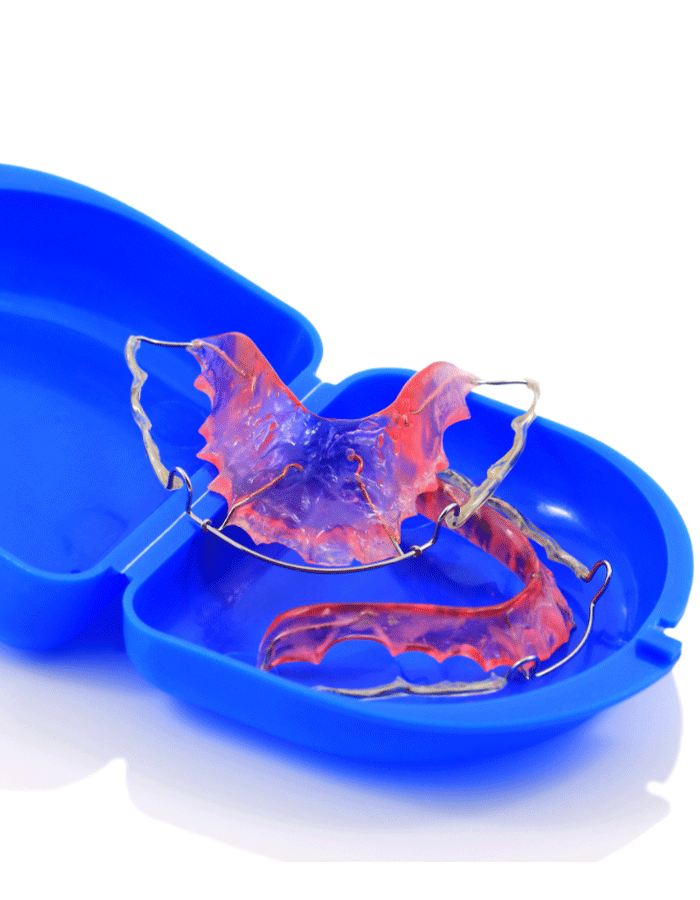Retainers
After orthodontic treatment ends a retainer is used to to ensure the teeth do not regress back to their previous position.
acf domain was triggered too early. This is usually an indicator for some code in the plugin or theme running too early. Translations should be loaded at the init action or later. Please see Debugging in WordPress for more information. (This message was added in version 6.7.0.) in /wordpress/wp-includes/functions.php on line 6121
After orthodontic treatment ends a retainer is used to to ensure the teeth do not regress back to their previous position.

When braces or clear aligners are finally removed, the “retention” phase begins for most individuals. The objective of this phase is to ensure the teeth do not regress back to their previous position. A retainer will be used to maintain the improved position of the teeth. A retainer is a fixed or removable dental appliance that has been custom-made by the orthodontist to fit the teeth. Retainers are generally made from transparent plastic and thin wires to optimize the comfort of the patient.
Retainers are worn for varying amounts of time, depending on the type of orthodontic treatment and the age of the patient. Perseverance and commitment are required to make this final stage of treatment successful. If the retainer is not worn as directed, treatment can fail or take much longer than anticipated.
There are a variety of retainers available, each one geared towards treating a different kind of dental problem. The orthodontist will make a retainer recommendation depending on the nature of the original diagnosis and the orthodontic treatment plan.
The following are some of the most common types of retainers:
Retainers are based on the final phase of treatment and are intended for the purpose of retention. Aligners are particularly developed to facilitate mobility. When the retention phase begins and what sort of retainer/retention strategy is suitable for the patient should be determined by the treating orthodontist.
There are a few basic things to consider for proper use and maintenance of your retainer.
Don’t lose the appliance – It is advisable to place your retainer in its case while eating, drinking, and brushing. Leaving a retainer folded in a napkin at a restaurant or in a public restroom can be very costly if lost because a replacement must be created. A brightly colored case serves as a great reminder.
Don’t eat while wearing a retainer – It can be difficult and awkward to eat while wearing a removable retainer and it can also damage the device. Food can get trapped around a Hawley retainer wire or underneath the palate, causing bad breath. When worn on the upper and lower arches simultaneously, VFR retainers do not allow the teeth to meet. This means that chewing can be very difficult.
Clean the retainer properly – Removable retainers can become breeding grounds for mineralized plaque and bacteria. It is essential to clean the inside and outside thoroughly as often as possible. Hawley retainers and Essix retainers can be cleaned with a toothbrush. Denture cleaner or a specialized retainer cleaner is also recommended for Essix retainers.
Wear the retainer as directed – This phase of treatment is critical. The hard work has been done; the braces are off, and now it is tempting not to wear the retainer as often as the orthodontist recommends. Retainers are needed to give the muscles, tissues, and bones time to stabilize the teeth in their new alignment. Failure to wear the retainer as directed can have regrettable consequences, such as teeth returning to their original position, added expense, and lost time.
If you have more questions about retainers or want to schedule an appointment, please give us a call and we will be happy to discuss further.